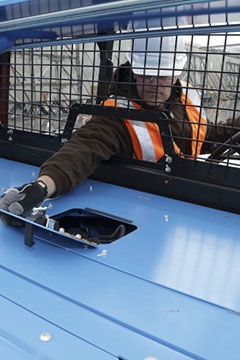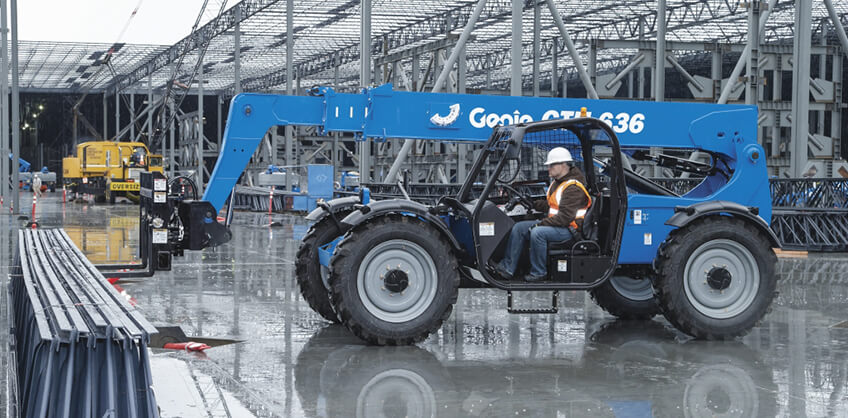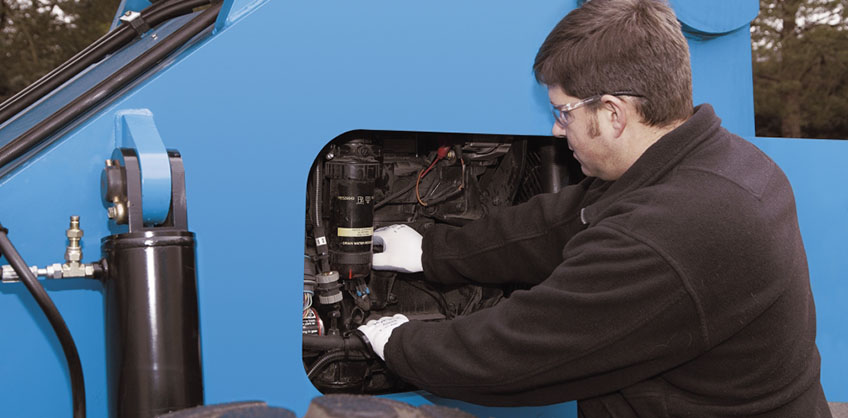Daily To Do’s: Pre-Operation Inspections for Genie® Telehandlers
by Scott Owyen - Director of Training On Nov 5, 2020, 03:00 am
Subscribe To Aerial Pros
Filter by tags
A pre-operation inspection is a visual inspection of a telehandler performed by the operator prior to each work shift. The inspection is designed to discover if anything is apparently wrong with a machine before the operator performs the function tests.
A best practice for safe use is for the telehandler operator to follow the step-by-step instructions listed in the manufacturer’s supplied operator’s manual to complete the pre-operation inspection prior to start-up of shift. For example, Genie operator’s manuals contain specific, detailed instructions on what tasks to perform, as well as how to perform the tasks. Below is an example of a pre-operation inspection check list that Genie recommends its telehandler operators perform.
- Be sure that the operator’s and safety manuals are complete, legible and in the storage container located inside the operator’s cab
- Be sure that all load charts are legible and in place
- Be sure that all decals are legible and in place. See the “Inspections” section of the operator’s manual for guidance

- Check for hydraulic oil leaks and proper oil level. Add oil if needed. See the “Maintenance” section of the operator’s manual for guidance
- Check for battery fluid leaks and proper fluid level. Add distilled water if needed. See “Maintenance” section
- Check for engine coolant leaks and proper level of coolant. Add coolant if needed. See the “Maintenance” section of the operator’s manual for guidance
- Check the transmission oil level. Add oil if needed. See “Maintenance” section
- Check DEF level (if applicable). See “Maintenance” section
- Drain the fuel/water separator. See “Maintenance” section
- Air-filled tires models: Check for proper tire pressure. Add air if needed. See “Maintenance” section
- Check the following components or areas for damage, improperly installed or missing parts and unauthorized modifications:
- Electrical components, wiring and electrical cables
- Hydraulic hoses, fittings, cylinders and manifolds
- Fuel, hydraulic and coolant tanks
- Axles and drive hubs
- Boom wear pads
- Tires and wheels
- Engine and related components
- Battery pack and connections
- Limit switches, alarms and horn
- Alarms, beacons, lights and mirrors (if equipped)
- Pins, nuts, bolts and other fasteners
- Boom and chassis angle indicators
- Brake release components
- Seat belt
- Safety arm
- Outrigger housing and footpads (if equipped)
- Forks or attachment
- Check entire machine for:
- Cracks in welds or structural components
- Dents or damage to machine
- Excessive rust, corrosion or oxidation
- Be sure that all structural and other critical components are present and all associated fasteners and pins are in place and properly tightened
- After completing the inspection, operators need to be sure that all guards, screens and compartment covers are in place and latched
Operators should always read the telehandler’s operator’s manual provided by the equipment manufacturer to learn more on how to perform these tests. It is important that operators always use the appropriate operator’s manual for the telehandler they are inspecting.
Related Posts

Aerial Equipment 101: What Is a Telehandler?
Telehandlers are multi-purpose machines that lift, move and place material.
Continue Reading


